Dogs are like us, humans, in many ways. For instance, dogs need a balanced diet to live a long, and healthy life just like we do. And in the same way, they’re also prone to weight gain.
And while all dog breeds can be prone to weight gain, there are some that are at a greater risk of suffering from dog obesity, which can be dangerous.
Below, we have listed six dog breeds that are most prone to dog obesity.
Are you curious if your little pooch is one of them? Then continue reading below to find out!
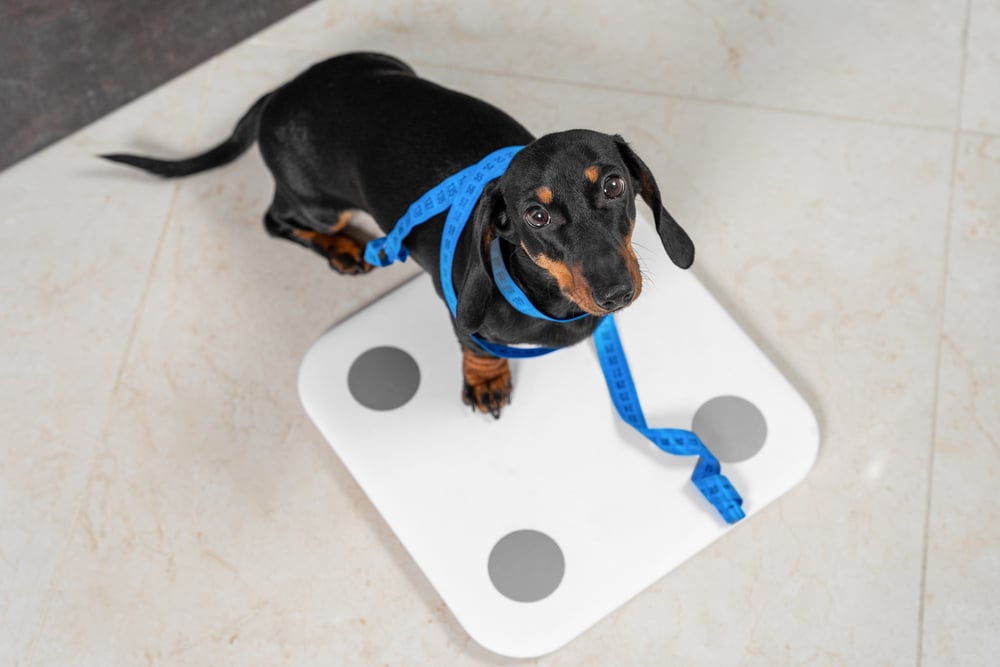
When Is A Dog Considered Obese?
On the other hand, a dog is considered overweight when its weight is 15% (or more) above their ideal weight.
And did you know that, according to The Association for Pet Obesity Prevention (APOP)’s report in 2021, more than half of the dogs in the U.S. are either considered obese or overweight?
Furthermore, according to a survey, 87% of veterinary professionals believe that dog obesity is a disease. As a matter of fact, it is the most common preventable disease affecting dogs today.
Why Are Some Dog Breeds More Prone To Obesity Than Others?
Specific descriptions of breed standards contribute to a dog breed’s proneness to obesity. By breeding to these descriptions, the genetic selection increases the risk of dog obesity, according to a study.
The following words used in a breed’s standards description that contribute to dog obesity the most are:
- Muscular
- Heavier in bone
- Massive build
- Square and thick set in overall build
- Dogs are more massive throughout
- Square and cobby
- Bold and valiant figure
And while genetics is a contributing factor to a dog’s obesity, American Kennel Club’s (AKC) chief veterinary officer, Dr. Jerry Klein, says that eating too much food and exercising too little generally contributes to obesity.
6 Dog Breeds Most Prone To Dog Obesity
Below, we have listed six dog breeds that are at a greater risk to becoming obese and reasons/factors that makes them more prone to the disease.
1. Labrador Retrievers
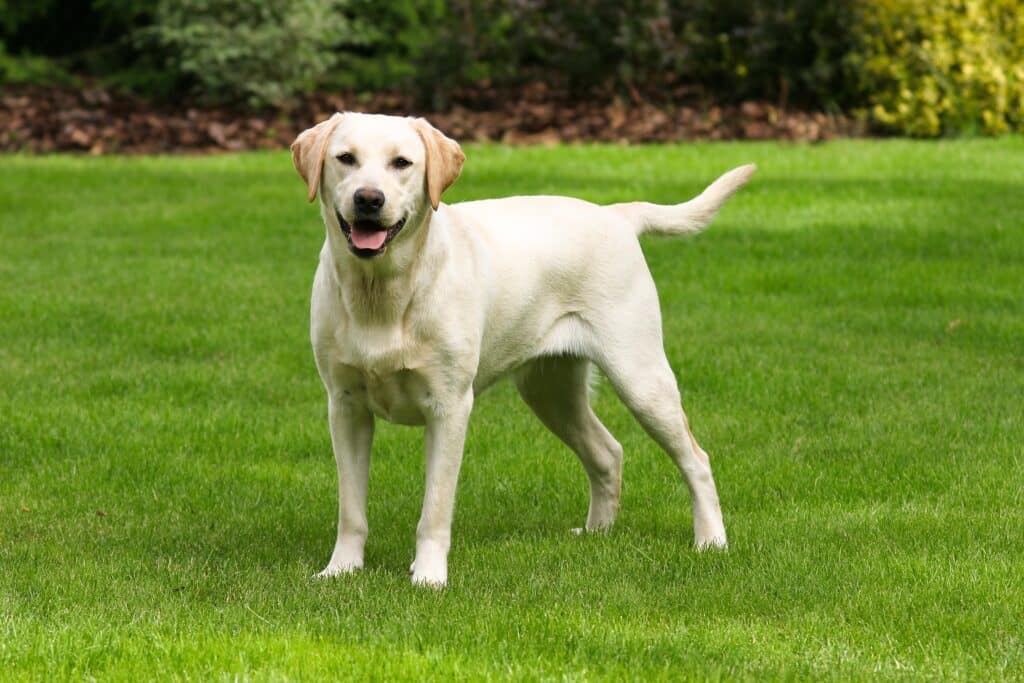
The sweet and loving Labrador Retriever was the U.S. most loved dog breed for 31 years. And it doesn’t come as a shock that they made it to the list.
If you own a Labrador, you know that they find it hard to satisfy their hunger and will eat just about anything and everything. But did you know that this characteristic is actually genetics?
According to a study, most Labradors have a “deleted gene” that makes them more food-motivated. The advantage of this mutation is that it makes them easier to train more than other breeds. But the disadvantage is that they don’t know when they feel full, so they tend to overeat and pack on the pounds.
2. Miniature Dachshund
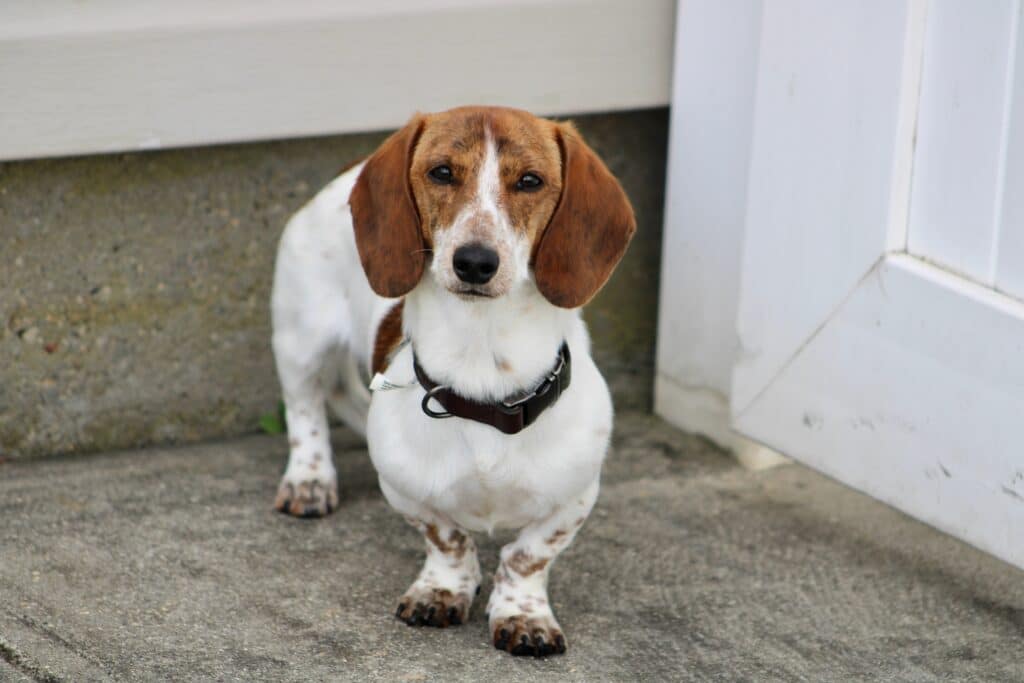
This carefree and vibrant short-legged pooch is a popular family companion. But the Miniature Dachshund’s unique sausage shape and tiny legs put them at a great risk to become obese.
Due to their tiny and short legs, Dachshunds are predisposed to a health condition called Intervertebral Disk Disease (IVDD). This condition can make the dog’s back and neck hurt and they become unwilling to walk and/or exercise, hence the weight gain. And ironically, all the weight they gain from IVDD makes the condition worse.
3. Pug

Known for being clever and affectionate, the Pug is a breed adored by millions around the world. This breed, along with a string of health concerns, is also prone to dog obesity.
As a matter of fact, a 2022 study by the Royal Veterinary College indicates that Pugs are at highest risk of obesity out of all dog breeds. And Banfield Pet Hospital’s 2020 Veterinary Emerging Topics (VET) Report reveals that 64% of pugs are overweight, topping the list of overweight dogs.
Due to their flat faces, which makes them prone to breathing problems, pugs do not like to exercise. Furthermore, pugs are perceived to be a lazy dog breed, which leads to weight gain.
4. Beagle
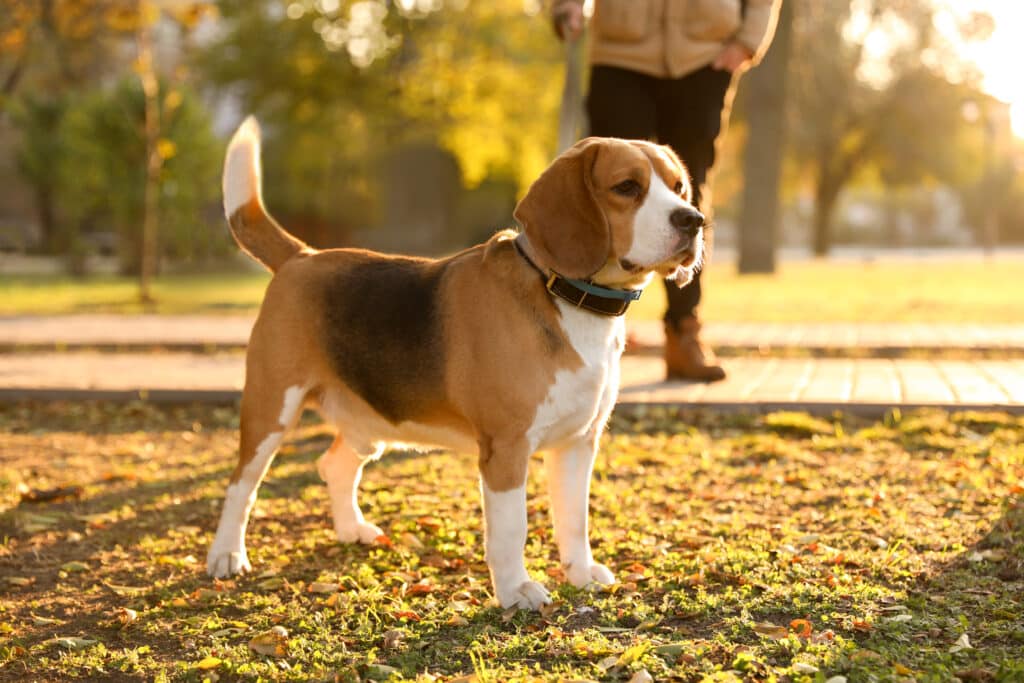
The Beagle is the most famous hound dog in the U.S and is a popular family companion. And they are a funny, easygoing and happy-go-lucky breed.
While Beagles are energetic and playful, they also love to eat – and they love to do it fast, too! And like Labradors, they have a big appetite and do not know when they feel full.
In addition to that, the same study by the Royal Veterinary College that listed Pug as the dog breed at highest risk of dog obesity, listed Beagles second on the same list.
5. Golden Retriever
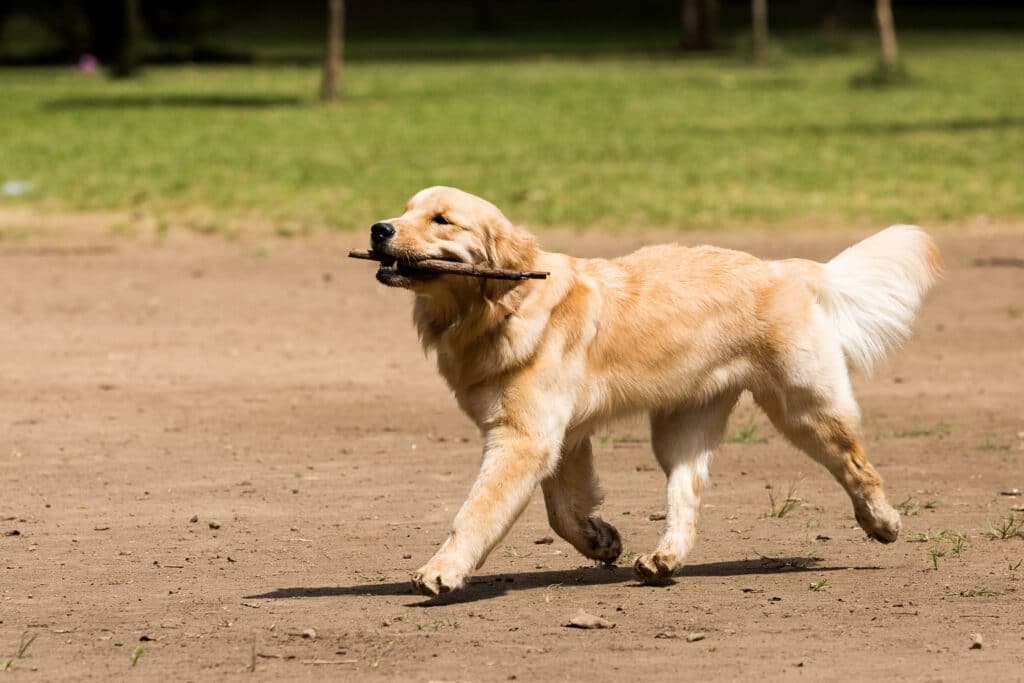
Loyal, intelligent and friendly – these aren’t the only characteristics Golden Retrievers are known for. The breed is also known as a notorious overeater. Golden Retrievers will eat everything but can never satisfy their hunger, making them more prone to dog obesity than other breeds.
In fact, data collected by APOP back in 2016 reveals that nearly 63% of Golden Retrievers in the U.S. are overweight or obese.
6. Cocker Spaniel
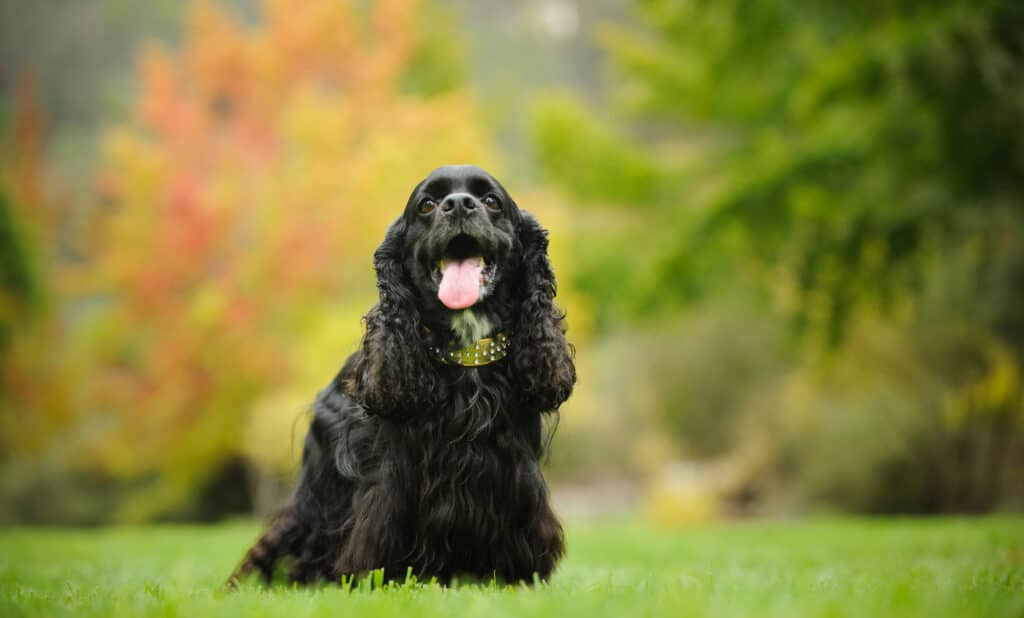
Known for their regal appearance, the affectionate yet mischievous Cocker Spaniel is surprisingly prone to dog obesity.
Even though Cocker Spaniels are energetic, they are, like other breeds mentioned on the list, food-motivated and has a huge appetite. So, they tend to eat a lot of food and gain a lot of weight because of it.
In addition to that, The Royal Veterinary College also listed the Cocker Spaniel as one of the breeds that showed increased risk of dog obesity in 2021.
Health Issues Related To Dog Obesity
Dog obesity is a serious health concern and can contribute and/or cause other serious health problems. Among these, the most common health issues that obesity can affect are:
- Heart Disease
- Intervertebral Disk Disease
- Diabetes
- Hypertension
- Osteoarthritis
- Respiratory issues
- Cancer
Furthermore, dog obesity can also make a dog’s lifespan shorter. According to VCA Hospital, heavy dogs lived 6 to 12 months shorter than lean dogs. And even “moderately” obese Labrador Retrievers have been found to live nearly two years shorter than their leaner counterparts.
What To Do To Help An Obese Dog
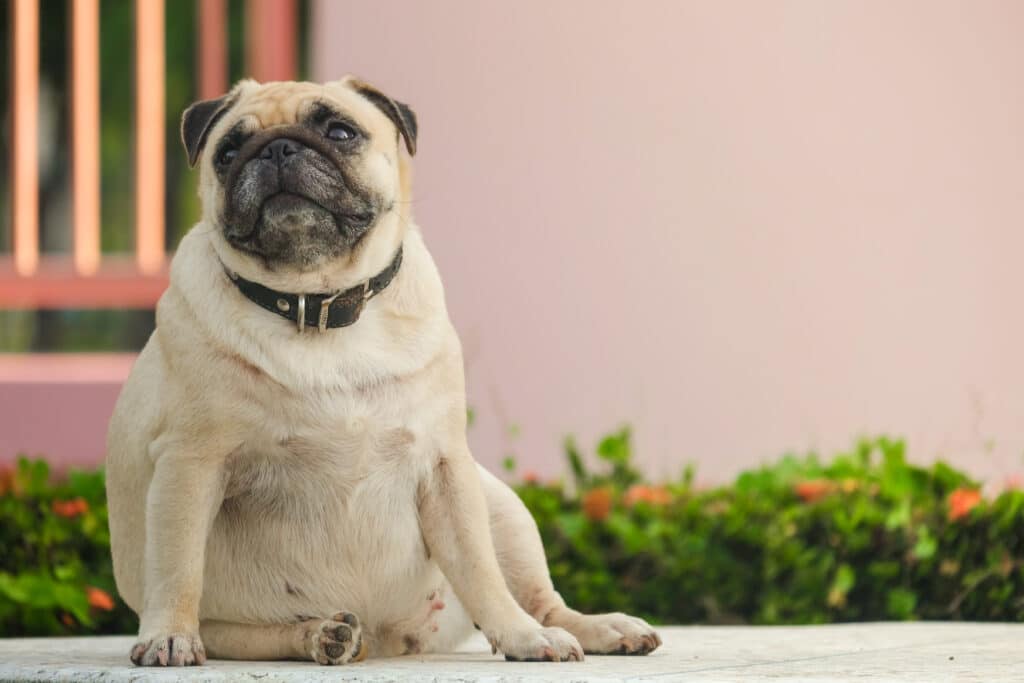
If you can tell that your furry friend is starting to become obese, don’t worry! You can still help your dog get back in shape. Here are a few tips to help prevent obesity in your pooch:
- Provide a proper and balanced diet. While every dog is different, all dogs require a balanced diet that meets all their nutritional needs. To start, you can try a high-fiber and high-protein diet. A study suggests that overweight dogs respond well to it.
- Exercise properly. Proper exercise will help your dog lose a few pounds. It’ll also help them create an active lifestyle. But of course, the exercise must depend on important factors such as the dog’s age, breed and/or underlying health conditions.
- Consult with your dog’s veterinarian. Of course, an expert’s advice is always the best way to go and they can help you determine the best plan of action for your dog.
- Limit or substitute treats. While it’s impossible to say no to our furry friends sometimes, we have to limit the amount of tasty treats they get. Or, you can substitute their treats with fruits or vegetables.
- Control portion sizes. Instead of giving them one big meal a day, feed your dog smaller portions and divide the food in 2 to 3 servings throughout the day.
- Consider interactive feeders. These type of toys help your dog eat their food slower and makes them work for it.
- Be consistent and patient. Ensuring that you follow the above mentioned tips consistently is important. And you have to be patient because helping your obese dog lose weight is going to be a long-term project.
Conclusion
Some might think an overweight or obese dog is “adorable” because of the way they look. But the underlying conditions they can suffer while being overweight or obese are certainly not worth it.
Remember, a dog at its ideal weight is happier, healthier and will have a longer life to live and spend with its human family.



